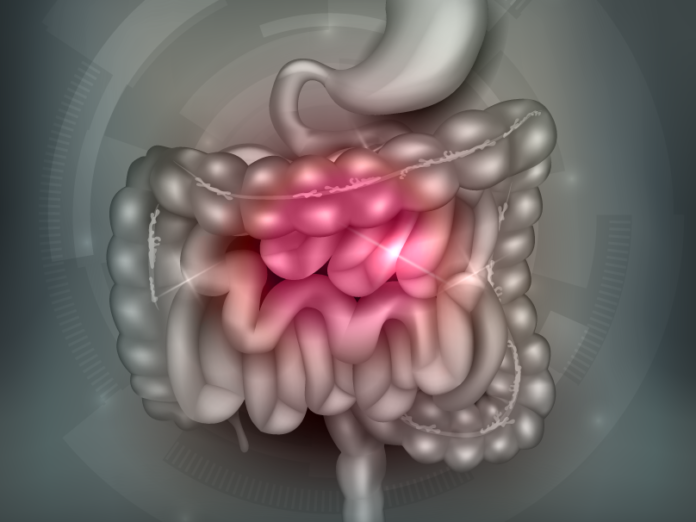If you’re suffering from a combination of common but difficult-to-diagnose health ailments, a possible solution may be simpler than you think.
It all comes down to a valve that separates your small and large intestines. It’s one of the body’s many “check valves” that keep things going in the right direction.
This valve, called the ileocecal valve (sometimes referred to as Tulp’s valve, or the colic valve), opens and closes to prevent the backup of waste from the large intestine into the small intestine. It’s named after the parts it separates: the ilium and the cecum, the last part of the small intestine and the first part of the large intestine, respectively.
Unfortunately, there haven’t been many scientific studies on this important valve (here’s one recent study), and ileocecal valve malfunction is often dismissed by the medical community as a source of health problems. However, it is often recognized and treated by integrative and functional medicine doctors like myself who often advocate for natural treatment.
The good news is that there are options to treat ileocecal valve syndrome, which are relatively simple. Some may even be done at home, with no need for invasive procedures.
Symptoms of Ileocecal Valve Syndrome
First, let’s review the anatomy. Your small intestine’s job is to absorb all the nutrients it can get from the digested food that comes from your stomach. What’s left over goes into the large intestine, which absorbs water and stores waste until it is passed out of the body.
When the ileocecal valve is stuck shut, the waste that’s supposed to pass into the large intestine can’t move and instead begins to be absorbed by the small intestine. Those with this problem may experience constipation as the flow of waste gets slowed or stopped.
When the ileocecal valve is stuck open, waste from the large intestine backs up into the small intestine, which can cause the small intestine to absorb the waste. A stuck-open valve may result in diarrhea.
The absorption of toxic by-products caused by these problems may manifest symptoms in various areas throughout the body, including:
- Shoulder pain
- Chest pain or pain around the heart
- Dizziness and lightheadedness
- Fever and flu symptoms
- Tinnitus (ringing in the ears)
- Sudden and unexplained low back pain
- Nausea
- Faintness
- Headache
- Sudden thirst
- A pale appearance or dark circles under the eyes
How To Treat Ileocecal Valve Syndrome
Diet
While symptoms persist, you can modify your diet for a short period of time in a few different ways.
- Modify your roughage-type food intake. If the problem is diarrhea, it is helpful to eliminate all roughage-type food for a short period of time. If it is a closed valve and constipation is a problem, then increase the roughage.
- Avoid irritating foods: anything spicy or highly processed (junk food)
- Avoid alcohol and caffeine
2-Part Supplement Plan
1.) I recommend using two supplements to regulate Ileocecal Valve Syndrome. Take one chelated magnesium twice a day. In my experience, the proper dose and form of magnesium regulates the nerves which go to the valve’s muscle. This, in turn, helps regulate the valve. As you may recall from my previous articles, about 80-90% of the U.S. population is deficient in magnesium, which is necessary in over 300 known cellular functions in the human body.
2.) The proper dose and strains of probiotics populate the GI tract with good bacteria, which aid with digestion. Along with chelated magnesium, I recommend taking Ultra Probiotics, one packet a day for eight weeks. After that, you can take one Probiotic Formula capsule a day with continued chelated magnesium for ongoing valve (and overall) health.
As we all should know by now, a healthy diet and regular exercise is the foundation of health for all bodily systems, gut and otherwise.
Massage, Manipulation & Acupuncture
Certain chiropractors, osteopathic physicians and other medical professionals have been trained to locate the ileocecal valve, and to manually open and close it. There are reflex points in your body that can be massaged for brief periods of time, to gain effective results. Some acupuncture professionals are also able to treat this issue.
Cold Press
One of the simplest ways to relieve your ileocecal valve symptoms, is to apply a cold press (such as a freezer cold pack) to the valve area, located in the lower right abdomen near the appendix. You may feel a knot in the area and apply the cold pack directly to it for about 15 minutes. This can be a quick fix to alleviate symptoms.
As always, be sure to see your doctor to exclude other possible causes and help with the proper diagnosis.
—
Photo credit: guniita / bigstock.com









My mother has been diagnosed with gastroparesis. Shehasbeen doing fine. Until today what would you recommend for her? She also has Waldenstroms syndrome, and Lupus. So hit hard to balance all of theses issues. Do you have any suggestions.? She is 67ys old. Thanks
Hello Angea,
I am sorry to hear about all your mother has been through. Please contact me by DM to schedule a telemedicine (phone) consultation or
visit to our Integrative Medical Center.
Blessings,
Dr. Maxwell